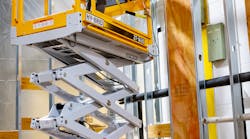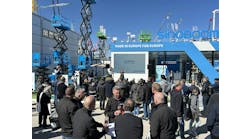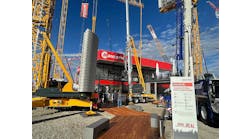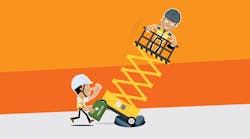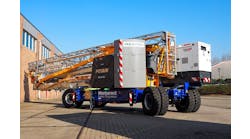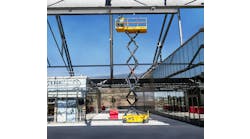Interview with Justin Kissinger, Hy-Brid Lifts: Electric Lift Solutions
RER: What impacts did COVID-19 have on your company as an aerial equipment manufacturer and on your customers?
Kissinger: The unique circumstances presented by COVID-19 pushed us to do business in different ways that remain part of our strategy today. To address our customers’ needs for greater flexibility, we created additional training resources like videos and Zoom calls. This ensures that even when we cannot get out in person, our customers get the support and training they need. Our online offerings have also expanded to include parts ordering and a used equipment section, so our customers have access to what they need, when they need it.
What new equipment enhancements or developments has your company come up with in the past year?
A significant development for us in the last year was a complete redesign of our products to meet ANSI A92.20 standards in a way that maintains efficiency for the user. One requirement of the new standards was an increased railing height. When other manufacturers needed to incorporate folding rails to fit a unit through standard personnel doors, we didn’t. Our industry-leading low stowed height allows our lifts to fit through standard doors without fold-down rails, enabling contractors to efficiently move to the next location without wasting time folding down the rails and setting them back up.
We are continually developing and enhancing our lift lineup, primarily focused on improving safety, incorporating environmentally friendly options, and coming up with unique solutions to increase operator efficiency on the jobsite. We are working on some developments that we look forward to releasing later this year.
Any new safety enhancements or new safety products or accessories?
We incorporated a number of safety enhancements based on the new A92.20 standards. In addition to the higher rails, there were other safety features that prevent the lifts from being misused, such as load sensing systems. User safety has always been a priority for us, and we continue to explore additional safety solutions for real-world applications.
There is more interest and growing in electric, battery-operated machines and other alternatives to diesel these days. What is your company’s strategy in regard to electric machines, electric drives, hybrids and alternative fuels?
Electric lift solutions are our company’s DNA. We have been on an electric lift path since we were founded in 2004. From the very beginning, Hy-Brid Lifts has always employed electric drives and steering, believing them to be the best drive for the access market. Users continue to notice the benefits, as well — like fume-free and quiet indoor operation, less risk of fluid leaks, proportional drive, reduced maintenance, and more power to climb inclines.
Our strategy is always focused on developing electric lift solutions and features built from customer feedback to maximize uptime and productivity on jobsites.
Leak protection systems have been a positive development in recent years? Do you expect other similar safety features?
Leak protection systems have been a positive development for environmental safety and preventing costly leaks on jobsites. We incorporated our LeakGuard system to provide users with a simpler alternative to inconvenient methods, such as diapers or multi-tray systems. Our innovative design features a single tray system, making LeakGuard easier and more efficient for operators to handle any cleanup on the jobsite. LeakGuard is currently available on all Hy-Brid Lifts Pro Series units.
Our focus on electrification has always provided an environmentally friendly lift option and we plan on developing additional green solutions for our products in the future.
New ANSI standards have allowed larger loads on boom lifts. What other trends do you expect to see in the near future?
With our industry-leading, high-capacity lifts, the new ANSI load-sensing restrictions still allow us to provide rental centers with lift options that meet their customers’ heavy load requirements. Where other manufacturers kept the same load restrictions they had in place, we were able to provide increased capacity to reduce the number of rental customers making service calls related to overloading the platform. Our lifts keep operators safe and productive with the ability to carry more materials at one time and reduce delays on the job from platform overload.
Other trends we continue to see include more manufacturers entering the race to electrification, increased connectivity with telematics, and additional specialized equipment or attachments that improve safety.
Widespread usage of telematics has been a positive development. What are some of enhancements your company has made in telematics and similar technology?
We have several telematic options available, based on customer preference. We are able to incorporate simple telematics like equipment position tracking on the jobsite, to more advanced telematics like using keypad access to turn on the machine.
We continue to develop more deeply integrated telematics solutions and will be showcasing these options at the ARA show this fall, along with our other lift enhancements.
Are there particular features that customers are asking for in the evolution of aerial equipment?
As standards progress and aerial equipment evolves to meet those requirements, our customers continue to seek more efficiency from their machines, along with safety improvements. Rental companies are looking for ways to provide unique solutions that differentiate their fleet and increase ROI. Hy-Brid Lifts has always let customer feedback guide our designs and we will continue to put their needs first. From our high lift capacities and non-folding rails to our LeakGuard system and more, this mindset has allowed us to stand out from the crowd with lifts that maximize safety and productivity for end users.
